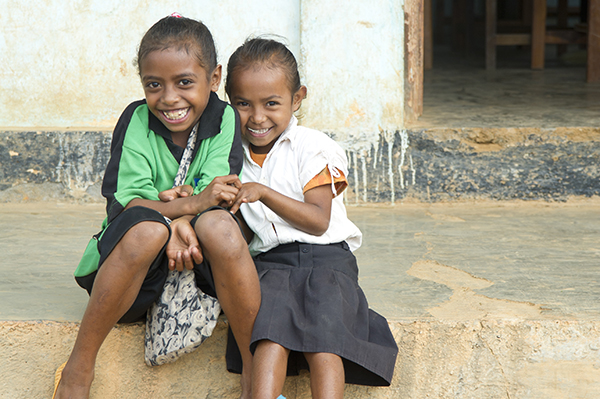
Nearly 20 panel sessions at a recent international education conference focused on some aspect of “global citizenship,” a key component of one of the new United Nations’ Sustainable Development Goals.
Target 4.7 of the Sustainable Development Goals states that learners should “acquire the knowledge and skills” to promote sustainable development, including through global citizenship, gender equality, human rights and non-violence, among other things.
There are a number of important and honorable objectives bouncing around in target 4.7. But what should be the target’s principle focus and how can it be measured? Should global citizenship become the primary frame of reference, and what exactly does global citizenship mean?
At the one-week Comparative and International Education Society conference in Vancouver, I found the presentation by Professor Jill Koyama of the University of Arizona on the subject to be especially illuminating.
Her paper, “The Elusive and Exclusive Global Citizen,” posited that the agency of the aspirational global citizen is defined—and most often constrained—by the rights afforded to him or her as a citizen of a particular nation.
She contends that global citizenship is “fraught with naïve conceptions about the realities of interconnectedness and belonging, in which nation states are no longer loci of power and regulation.”
Professor Koyama further believes that those groups in power that define what global citizenship means, rather than empowering the marginalized, could actually exacerbate inequality and exclusion—thus potentially doing more harm than good.
Human rights as an alternate emphasis
Instead, Professor Koyama recommends a reframing of the issue away from “global citizenship” and towards the struggle for human rights within the nation-state.
She would focus on future educational approaches around global-oriented issues and actions, encourage national citizens to exert their rights to challenge national policies that violate human rights and create further stratification, and scrutinize practices that result in the marginalization of certain groups or inequitable access to rights associated with citizenship.
Professor Koyama’s thoughtful approach resonates with me and others who believe that human rights must be embedded within sustainable development, and vice versa. Human rights, particularly those articulated in the U.N. Convention on the Rights of the Child, confer a comprehensive rationale for the sustainable development that is the principle focus of Target 4.7, as well as many of the other ideals it refers to.
For example, the principle of non-discrimination enshrined in U.N. Convention on the Rights of the Child Article 2 and the right to education in Articles 28 and 29 is a powerful basis for educating all children, including the most marginalized.
Article 24 concerns a child’s right to health and health care services, which seeks to diminish infant and child mortality, combat disease, eliminate malnutrition and ensure appropriate pre-natal and post-natal care. Article 27 focuses on giving each child a standard of living adequate for physical, mental, spiritual, moral and social development.
Article 29’s right to education calls that education to be directed to many aspects of target 4.7, including development of respect for human rights and fundamental freedoms, respect for cultural identity, language and values and the preparation for life in a free society, in the spirit of understanding, peace, tolerance, gender equality and friendship among all peoples, ethnic, national and religious groups and persons of national origins.
Article 32 protects against exploitative labor while Article 34 guards against sexual exploitation and abuse.
These and many other important human rights can drive progress towards the laudable ideals under the sustainable development umbrella in Target 4.7.
Measuring education for sustainable development
The perspective Professor Koyama raises is also directly relevant to how best to measure progress under Target 4.7. The current leading indicator for Target 4.7 talks about mainstreaming education for global citizenship and sustainable development across policy, curricula, teacher education and student assessment.
Yet, global citizenship education remains undefined under this indicator.
Professor Koyama’s concerns on the meaning and relevance of global citizenship suggest dropping the reference to global citizenship in this indicator, but retaining the one on sustainable development, including gender equality and human rights.
As for the specific approach to human rights education, the U.N. Office of the High Commissioner for Human Rights has suggested it be consistent with the World Program on Human Rights Education, which has been implemented in many countries since 2005.
One downside to omitting global citizenship from the indicator, however, is that some envision it as also fostering cognitive skills for critical, creative and innovative thinking, problem‐solving, and decision‐making.
Those life skills are indeed critical, but may be better situated in indicators for other education targets, such as 4.1, with its focus on quality education, or 4.4, which calls for relevant skills for employment, decent jobs and entrepreneurship.
Education for sustainable development should also include sciences that foster awareness and preservation of the planet and its resources, as had been reflected in an earlier proposed indicator relating to knowledge of environmental and geosciences.
Making these changes would avoid the concerns and confusion Professor Koyama identifies arising from the global citizen construct, while importantly linking sustainable development to several fundamental drivers of human progress and security, gender equality, human rights and environmental protection.